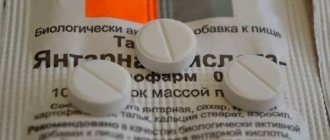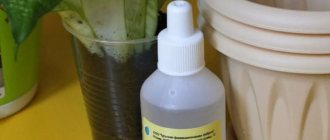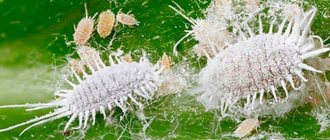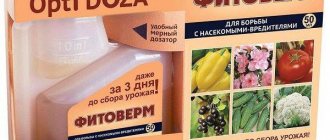Fitosporin-M is well known to many. This is a microbiological product with a systemic principle of action. The composition is based on live bacteria Bacillus subtilis, also known as Bacillus subtilis.
The fungicide helps fight a wide range of fungal and bacterial diseases (scab, blackleg, rot, etc.). But you can be sure that these infectious problems will not affect your garden only if you know how to dilute Fitosporin and how to use the ready-made solution.
Treatment with Fitosporin exclusively inhibits pathogens. The substance does not pose a threat to human health or domestic animals. The drug can be used even for flowering and fruit-bearing crops. At the same time, you can eat the fruits even on the day of processing. This is one of the important advantages of the fungicide and the secret of its popularity.
Why do indoor plants need phytosporin?
Fitosporin is known to many gardeners for its high efficiency and environmental friendliness. This almost completely safe product contains gram-positive aerobic bacteria, which, accumulating in the soil, help the plant resist various pathogenic pathogens.
The use of Fitosporin also helps indoor flowers adapt to new environmental conditions.
Treatment of plants with Fitosporin allows you to achieve important goals in floriculture.
- Improves nutrient absorption by roots.
- The activity of pests is suppressed.
- The soil becomes healthier, saturated with beneficial bacteria.
- Indoor plants take root better and grow faster.
- Flowers' immunity increases.
Action and properties of the drug
Fitosporin contains the active substance - the bacterium Bacillus subtilis (bacillus subtilis) on a humic carrier. Chalk, saturated with microelements, is used as the main filler of the carrier. The drug contains two strains of bacteria:
- An interstitial (endophytic) strain, penetrating into plant tissue, activates its protective mechanisms. At the same time, the proliferation of pathogenic bacteria is blocked and their cell membrane is destroyed.
- The surface (rhizosphere) strain synthesizes substances that are absorbed by the root system and have a positive effect on plant development.
A living culture of Bacillus subtilis, multiplying in the soil, saturates it with useful substances and suppresses the growth of pathogenic organisms.
Fitosporin has a number of properties that facilitate its use.
- Economical in consumption, a fairly long shelf life without loss of properties allows multiple treatments to be carried out with one solution.
- Due to its versatility and variety of forms, it is widely used in the fight against numerous diseases.
- High level of effectiveness and compatibility with other fungicides.
REFERENCE . Fitosporin is available in convenient volumes and various forms. The price of the product is affordable for most flower growers.
Compound
The active substance of Fitosporin is live bacteria Bacilus Subtilis, strain 26 D. These cells of Bacillus subtilis, together with spores of soil bacteria, are a completely natural product. Changes in temperature and humidity do not affect the effectiveness of the drug. The spores retain their properties at low temperatures and during drought . The composition includes chalk as a binding component, the GUMI additive to accelerate growth, macro- and microelements - potassium, bromine, selenium, copper, chromium and others.
What diseases and pests can Fitosporin-M be used against?
Fitosporin, being a broad-spectrum fungicide, is effective against many diseases of fungal and bacterial nature. It is widely used to protect not only indoor plants, but also those grown in open ground.
The main threat to flowers is caused by pathogens:
- zonal (black) spotting;
- powdery mildew;
- various root rots.
Fitosporin also suppresses the activity of pathogens:
- brown leaf rust;
- scab;
- moniliosis;
- cladosporiosis;
- fusarium;
- late blight.
Having a comprehensive effect on soil quality, the product actively suppresses the activity of pathogenic bacteria.
Types of bio-fungicide
Specialized varieties of fungicide are also produced for different crops. Available for cucumbers, potatoes, indoor flowers, etc. These preparations contain special spores and cells against specific diseases.
The use of Fitosporin for indoor plants is aimed at combating:
- leaf spotting;
- powdery mildew;
- rot of the root system.
The bio-product “Garden Flowers” is successfully used for vegetation in the garden.
Table 1.1 – Bio-product Fitosporin for various crops
| Variety of culture | Product name | What diseases need to be treated and prevented? |
| Cabbage and all its varieties | “Cabbage” Powder form 10 g |
|
| Potato tubers | “Potato” Powder form 30 g |
|
| Cucumbers, all cucurbits | “Cucumbers” Powder form 10 g |
|
| Tomatoes, peppers, physalis, eggplants | “Tomatoes” Powder form 10 g |
|
The concentration also depends on where and for what purposes the fungicidal solution needs to be applied. Let us consider further when to treat with Fitosporin and instructions for use.
Release forms of Fitosporin-M
Fitosporin is available in convenient packages. For greater efficiency, it is produced in three main varieties:
- In the form of a powder, which has an anhydrous fine structure. The powder can be used to prevent and treat diseases. It does not lose its beneficial properties during long-term storage.
- In the form of a paste in polymer packaging. This preparation is rich in humic substances. Mainly used for prevention and strengthening immunity. Has a long period of action.
- In liquid form, the drug is presented as a highly concentrated solution. It is used for spraying damaged plants.
Analogs
They are considered analogues of Fitosporin.
- Alirin. Biological fungicide based on live basteria. Its plus is the stimulation of protein and vitamin C production. It reduces the amount of nitrates, improves soil quality and promotes plant growth.
- Gamair based on Bacillus subtilis. Unlike Fitosporin, it is used exclusively for prevention and is powerless in case of plant infection.
- Baktofit. The product is based on Bacillus subtilis, however, unlike Fitosporin, the effectiveness of the drug is significantly reduced under the influence of ultraviolet radiation and at high temperatures.
How to dilute Fitosporin for indoor flowers and plants
Before treating indoor flowers with Fitosporin, you must read the instructions. It is important to pay attention to the required concentrations of Fitosporin and its purpose.
How to dilute powder for different colors, instructions
The powder is used in dissolved form. They spray or water flowers with it. Depending on the type of plant, the required concentration of the substance is selected.
| Purpose of application | orchids | violets | succulents | roses |
| Prevention by watering | 2g/1l | 1.5g/1l | 1.5g/l | 2g/1l |
| Prevention by spraying | 1.5/l | 1g/l | 1g/0.5l | 1.5g/1l |
| Treatment | 1.5-2g/l | 2g/l | 2g/l | 2g/0.5l |
How to use liquid form of phytosporin
Phytosporin in liquid form is easy to use. After opening the bottle, the product is diluted with water at room temperature in a ratio of 10 drops per 100 ml and mixed thoroughly. The prepared mixture is sprayed on indoor flowers or root watering is carried out.
Fitosporin in the form of a paste for indoor plants
The product in the form of a paste requires preliminary preparation. First, prepare a concentrated master solution, which can be stored for 4 years. To do this, the required volume of paste is dissolved in water at room temperature in a ratio of 1:2 and left for several hours.
Further dilution is carried out as necessary in accordance with the instructions. The working solution can be stored for up to 6 hours.
Reviews
Valery: I’ve been using Fitosporin for a long time and I don’t know of another such wonderful drug. As soon as I notice that a plant is becoming lethargic, I immediately add Fitosporin solution to it or spray it on the leaves. Always a great result.
Anatoly: I tried all forms of Fitosporin and decided that it was most convenient to use powder. I prefer to treat plants not at the root, but at the leaves, because this way the drug begins to work faster, and the solution flowing from the leaves moistens the soil just as much as needed. By the way, several times I got carried away and overestimated the amount of the drug in the solution, but did not notice any negative consequences of the overdose.
Natalya: first I tried the drug for spring preventative treatment, and now I spill it on the soil in the greenhouse before planting seedlings, and as soon as the seedlings take root, I spray them with Fitosporin on the leaves. Now I can’t imagine how I managed without him.
Katerina: I treat the substrate with Fitosporin-M solution when replanting indoor plants. They began to quickly take root, are growing well, and look great. Even the foliage became qualitatively different. Over the past three years, not a single diseased plant!
- A reliable and simple remedy for grape oidium - colloidal sulfur
Angelina: just as any Christian should have the Bible at hand, so every gardener should have Fitosporin-M in stock. If you use this drug for preventive purposes, then you will not have to treat the plants. An excellent drug.
Official website and manufacturer's recommendations: https://ojz.bashinkom.ru/page/biozashhita-ot-boleznej
In what cases should Fitosporin-M not be used?
Despite the large list of advantages, use does not always lead to the expected result. First of all, the reason is non-compliance with certain rules.
- Parallel use of Fitosporin with incompatible fungicides or insecticides can lead to partial wilting and shedding of leaves.
- Simultaneous use with growth regulators reduces its effectiveness.
- The alkaline environment of the soil leads to the death of microorganisms that make up the product.
Compatibility
Fitosporin-M is compatible with fungicides Tilt Premium, Fundazol, Vitivax 200, Baytan universal, TMDT, insecticide Decis, growth stimulants Epin, Ribav-Extra, Zircon, herbicide Triallat and antibiotic drug Fitoflavin. Fitosporin-M may be compatible with other chemicals.
- How to prepare Bordeaux liquid
Fitosporin-M should not be combined with drugs that have an alkaline reaction. If sediment or flakes appear when mixing drugs with Fitosporin-M, this indicates their incompatibility.
Precautionary measures
“Fitosporin”, due to its natural composition, belongs to hazard class IV drugs, which indicates its relative safety.
However, if it enters the human body, symptoms of poisoning may appear. It is important to observe a number of precautions when using it.
- You must use gloves when working. When spraying, you can additionally protect your respiratory system.
- During use, it is prohibited to eat or smoke.
- If the substance gets into your mouth, you must drink a large volume of water with absorbent substances.
- After working with the product, you should wash your hands with warm water and detergent.
Security measures
Fitosporin: how to use and why. When working with phytosporin, gloves should be worn on your hands, and protective goggles on your eyes. There is no direct threat to humans from plants being treated with phytosporin. But nevertheless, when working with a biofungicide, it should be taken into account that if the substance gets on the mucous membranes, signs of irritation may appear. In this case, the substance should be washed off immediately. If the phytosporin solution gets inside the body, you should immediately induce vomiting and then take activated charcoal. Store phytosporin out of the reach of children and animals.
Tips and tricks for gardeners
Using Fitosporin and knowing some tricks, you can achieve maximum effectiveness.
- Strict adherence to storage rules.
- Protect the finished solution from direct sunlight.
- Preparation of solutions using boiled water.
- Use strictly in accordance with recommended dosages.
Answers to frequently asked questions
When using Fitosporin, flower growers may have questions.
How often should flowers be treated?
Answer: Fitosporin is a systemic drug. Plants need to be treated several times every 10 days.
Can Fitosporin harm plants?
Answer: The unique properties of Fitosporin are manifested in its selective action on the bacterial world. It inhibits exclusively pathogenic microorganisms, acting exclusively positively on the plant.
Are there types of Fitosporin created for different crops, how do they differ?
Answer: All types of Fitosporin are interchangeable. However, it is important to remember that the composition for different crops includes specific microelements.











